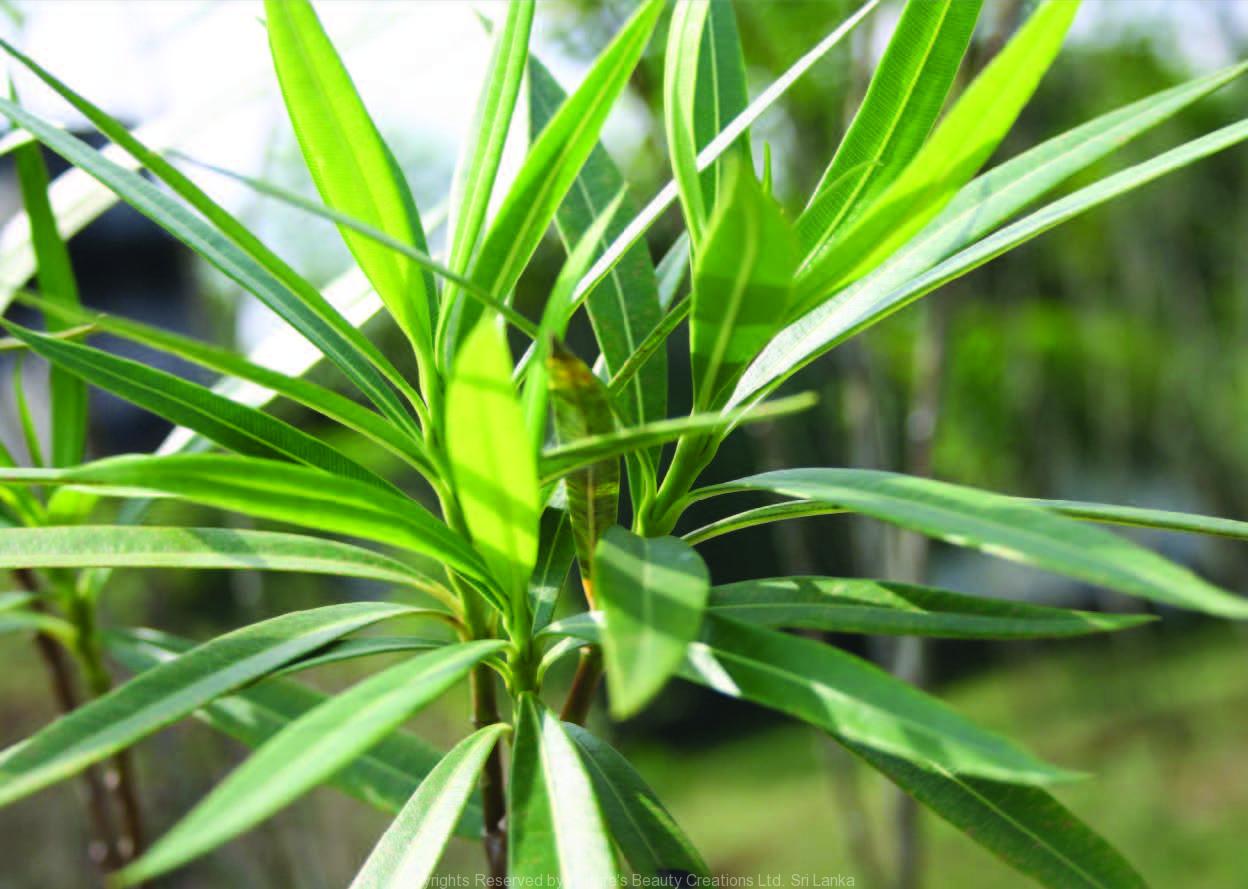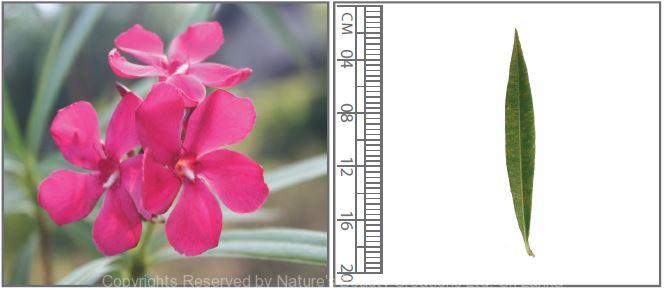

Traditional Knowledge
Useful plant parts :
Leaf and root
Uses in traditional medicine :
- Root bark is used for ring worm infections, leprosy, eruptions of skin, boils and haemarroids
- Leaves and bark are used for eczema and taken internally for epilepsy
- Infusion of the leaf act as a heart tonic and diuretic
Scientific Research
Chemical constituents:
Pentacyclic triterpenes: oleanderol, cardenolides, betulin, betulinic acid, ursolic acid, oleanolic acid and their derivatives, polyphenolic cardiac glycoside: oleandrin from leaves
Bioactivity :
Cardenolides: central nervous system depressant; oleandrin: antitumour; chloroform, ethanol and methanol extracts of root bark and leaves: antimicrobial
Clinical:
Caution : Whole plant is poisonous
References : Beguma, S. et al., (1999), Bio-active cardenolides from the leaves of Nerium oleander, Phytochemistry, 50(3), 435–438. Hussain, M. A. and Gorsi, M. S., (2004), Antimicrobial Activity of Nerium oleander Linn., Asian Journal of Plant Sciences, 3(2), 177-180. Manna, S. K. et al., (2000), Oleandrin Suppresses Activation of Nuclear Transcription Factor-κB, Activator Protein-1, and c-Jun NH2-Terminal Kinase, Cancer Research, 60, 3838. Siddiqui, S. et al., (1988), Oleanderol, a New Pentacyclic Triterpene from the Leaves of Nerium oleander, Journal of Natural Products, 51(2), 229–233. Siddiqui, B. S. et al., (1997), Cardenolides from the Methanolic Extract of Nerium oleander Leaves Possessing Central Nervous System Depressant Activity in Mice, Journal of Natural Products, 60(6), 540–544. Sharma, P. et al., (2010), Two new compounds from the stem of Nerium oleander, Indian journal of chemistry, 49(B), 374-378 Smith, J. A. et al., (2001), Inhibition of export of fibroblast growth factor-2 (FGF-2) from the prostate cancer cell lines PC3 and DU145 by anvirzel and its cardiac glycoside component: oleandrin, Biochemical Pharmacology, 62(4), 469-472.
Copyrights Reserved By
Natures Beauty Creations



